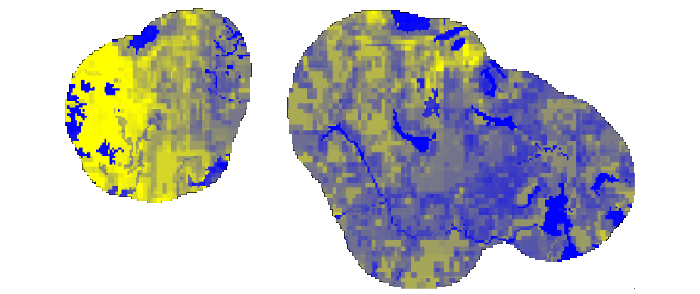L-Range Download
Thank you for your interest in L-Range. The collection provided includes programs built for use on Windows operating systems or other systems using a Windows emulator. If another version is needed, L-Range may need recompiled from the source files, version 1.0, available on Github. The file linked below is in a compressed and archived format known as ZIP files. See the bottom of this page to learn more about ZIP files. Downloading some of the files may be blocked on some browsers and require you to confirm their download before you can proceed. Uncompress the files to make the software available. It is generally most straightforward to install the program with a folder with a brief name, with the root of a drive being most effective (e.g., C:\L-Range\); very lengthy folder paths may cause errors. After uncompressing the file, edit the "L-Range.ini" file in the \L_Range\L_Range_Bin folder to match the pathway you have used. For example, if you have installed the program on the root of the C drive, it would be C:\L_Range\L_Range. To test the installation, see if L_Range.exe in the \L_Range\L_Range_Bin folder will execute. NOTE: Downloading L-Range files indicates that you agree with our Gnu General Pulbic License: L-Range, a Local Rangeland Model Copyright (C) 2017-2024 Randall B. Boone This program is free software: you can redistribute it and modify it under the terms of the GNU General Public License as published by the Free Software Foundation, either version 3 of the License or any later version. This program is distributed in the hope that it will be useful, but WITHOUT ANY WARRANTY; without even the implied warranty of MERCHANTABILITY or FITNESS FOR A PARTICULAR PURPOSE. See the GNU General Public License for more details. See http://www.gnu.org/licenses/GPL-3.0 for details.L-Range Files
This archive contains all the files needed by L-Range for an example application. The file was current as of February 10, 2024. → L-Range Ver. 1.0 ← A Python graphical user interface has been created to allow users to inspect output and is included in \L_Range\L_Range_Bin. That tool is known to function with Python interpretors 3.10 or newer. It will require the installation of the very common matplotlib and numpy packages. The graphical user interface may be installed anywhere, separately from L-Range. It may be downloaded from the links below. Add to the folder where L-Range.py is stored the corresponding configuration file, L-Range.ini, and edit that file to point to the installation of L-Range of interest. → L_Range_GUI.py ← → L_Range.ini ← The large downloadable archive above includes a tool to convert L-Range output to GRID ASCII format, which is usable with ArcGIS, QGIS, and many other software packages, L_Exporter. Below is a stand-alone version as well. The code is included in the archive and may be referenced when writing other tools (e.g., in R) to read L-Range files directly. → L_Export.zip ← As cited above, if the source code is needed, version 1.0 may be downloaded from → Github ←.Using ZIP files
Many files are stored in one larger file, and in a compressed format. When you click on the download link, you will be asked if you want to open the file or save it to your computer. Select Save and identify a location on your computer where you would like to store the file, then select Save. After the download is complete you may close the dialog box. Locate the file you saved and double-click it. The ZIP file will open. Most current computer operating systems know how to uncompress ZIP files, and will show you the contents of the ZIP file. Copy the contents to a location you select.
